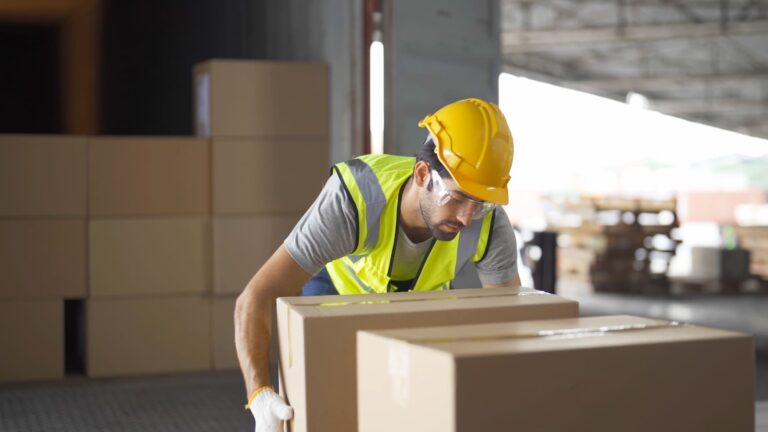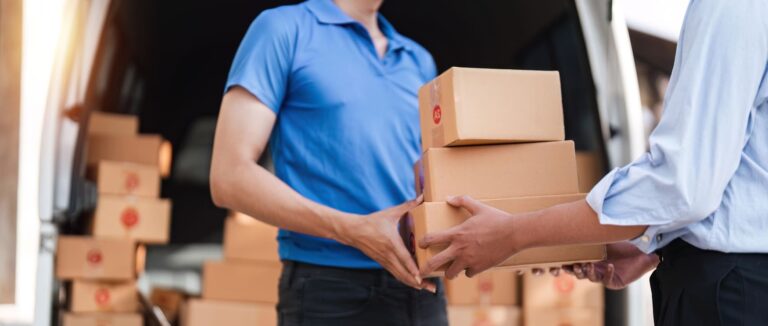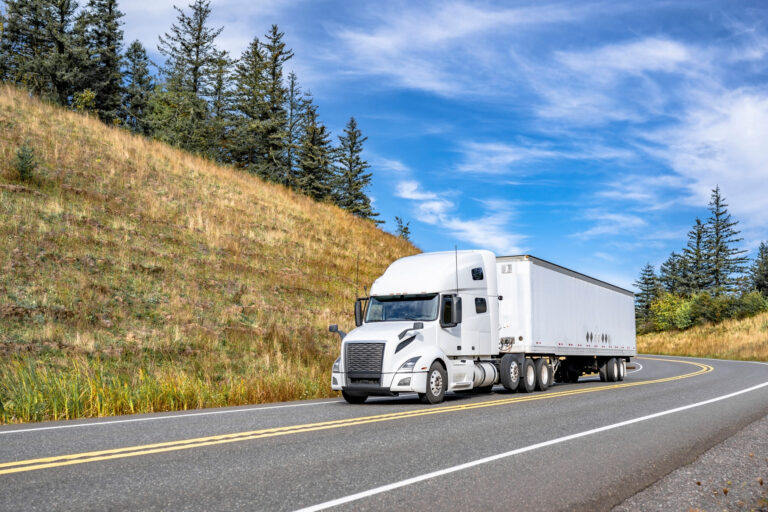3PL vs In-House Logistics: When to Use a Warehouse or 3PL? (Essential Guide)

Running order fulfillment from your garage or back room can save money at first, but growth brings new challenges. In-house logistics means you handle everything yourself – storing inventory, packing boxes, managing shipping, and processing returns. This gives you full control and customization, but it becomes complex as orders grow. A 3PL (third-party logistics) provider is a specialist that takes on your warehousing and shipping. They have the tools, warehouse space, and expertise to run your fulfillment operations – receiving stock, inventory control, picking, packing, shipping and even returns – while you focus on growing your business. Essentially, a 3PL becomes your outsourced shipping department.
In-House vs 3PL Fulfillment: What’s the Difference?
Managing your own warehouse means buying or leasing space, equipment, and software, and hiring staff to run it. You set all the rules and processes. For example, you decide how to lay out the shelves, what packing standards to use, and how to handle rush orders. This gives you total control and deep product knowledge, but also means handling all the costs and work.
Outsourcing to a 3PL warehouse is pay-as-you-go. The provider already has warehouses, forklifts, carriers, and WMS software in place. You simply send them your inventory and they handle the rest. A 3PL typically offers scalable space and labor, cutting-edge technology, and carrier discounts from shipping in high volume. The trade-off is giving up some direct control over operations.
Geography: Many 3PLs have multiple warehouses. By storing stock near customers, they cut delivery times and costs. An in-house solution is usually one location, limiting reach.
Control: In-house means you run the show, but a 3PL means trusting someone else with your products.
Cost: Running your own warehouse requires heavy upfront investment (facility, forklifts, staff). A 3PL eliminates those fixed costs – you just pay for the space and services used.
Flexibility: 3PLs can quickly ramp capacity up or down. Growing inventory is easy to add, or remove during slow seasons. In-house expansion is slower and riskier (you must lease more space or buy equipment).
Expertise & Technology: 3PLs bring industry expertise and systems (like warehouse management software) that many small companies can’t afford alone.
Signs It’s Time to Outsource Fulfillment (Warehouse or 3PL)
Not sure if your business is ready for a warehousing solution or third-party fulfillment? Look for these common signs that your current in-house setup is at its limit. If several of these scenarios sound familiar, it’s a strong indication that outsourcing logistics could be beneficial.
- Order Volume Is Overwhelming Your Team: One of the clearest signs is when order volumes shoot up beyond what you can comfortably handle. Perhaps you or your staff are working late just to pack boxes, or mistakes and delays are creeping in because you’re rushing. If you’re feeling overwhelmed by order volume and struggling to keep up with demand, it’s time to rethink your approach. For example, industry experts often say that when fulfilling orders starts taking so much time that it eats into running your business (some suggest if it’s over ~20% of your work hours), outsourcing is likely overdue. A 3PL can absorb high volumes with ease, using their scalable staff and systems to ship orders out on time even during busy seasons.
- Running Out of Space for Inventory: Are your living room or office corners piled high with products? Outgrowing your storage space is a classic pain point for growing businesses. When every spare room turns into a stockroom (or you’re paying for expensive self-storage units), it might be more cost-effective to use a warehouse service. 3PL warehouses let you store inventory in a shared facility, so you only pay for the space you need, and you can scale up during peak season or scale down later. This avoids the major expense of leasing your own full warehouse before you’re ready. If rising storage costs or cramped space are an issue, a 3PL or on-demand warehouse can instantly give you breathing room.
- Fulfillment Is Eating Too Much Time (and Hurting Growth):Your time is valuable. If packing and shipping orders are eating up most of your day, leaving no room for marketing, product development, or customer service, it’s a warning sign. When logistics keep you from focusing on growth, outsourcing to a 3PL can help. They handle storage, packing, and shipping so you can get back to running and expanding your business.
- Rising Shipping Costs and Slow Delivery: Another sign is when your shipping process isn’t keeping customers happy or is getting too expensive. Maybe you’re noticing more complaints about slow deliveries, or you can’t offer 2-day shipping because doing it yourself from one location is impossible. 3PL providers specialize in logistics, they often have multiple warehouse locations and carrier partnerships to help achieve fast, affordable shipping. In fact, outsourcing can grant you access to discounted bulk shipping rates that you likely can’t get on your own. If your shipping costs are unpredictable or higher than you’d like, or you wish you could ship faster to compete (e.g. offer 2-day delivery), a 3PL can be a game-changer. They position inventory closer to your customers and use optimized shipping routes, reducing transit times. The result is happier customers and possibly lower shipping expenses for you.
- Frequent Errors or Operational Headaches: When a DIY fulfillment operation grows, errors and logistical headaches often follow. Signs include increased packing mistakes, lost track of inventory, or trouble handling returns promptly. Perhaps you’re juggling too many carriers and suppliers, which gets confusing and inefficient. If manual processes or outdated systems are causing errors, for example, inventory counts don’t match or orders slip through cracks, it indicates your current system is at capacity. A good 3PL will bring in modern warehouse management technology and streamline these processes. They centralize and automate tasks that might be giving you grief, from inventory tracking to coordinating shipments. Similarly, if managing returns or customer exchanges has become a drain, 3PLs can handle reverse logistics smoothly so that returns don’t bog you down. Don’t let back-end issues tarnish your customer experience, if mistakes are mounting, it may be time for expert help.
- Scaling or Expanding Feels Impossible: Think about your future plans. Do you want to launch new products, enter new markets, or handle seasonal spikes in sales? If right now you feel you “can’t keep up with demand” as you grow, or you hesitate to scale because your current setup would buckle under the pressure, that’s a sign you need a more robust fulfillment solution. A 3PL offers built-in scalability and flexibility – you can ramp up during peak season and not worry about hiring a whole new warehouse staff or renting extra space; the 3PL handles that for you. Likewise, if you want to sell into other regions or countries, a 3PL likely has warehouses and networks to distribute your product there without you having to physically set up new shipping centers. When your growth is constrained by logistics, it’s definitely time to consider using a warehouse or fulfillment partner to break through that ceiling.
Rent Your Own Warehouse vs. Using a 3PL
Once you’ve decided to upgrade from your current DIY approach, there are two main paths: getting your own warehouse or partnering with a 3PL warehouse provider. How do you choose? It often comes down to resources, expertise, and flexibility.
- Leasing/Buying a Warehouse (In-House Expansion): This route means you continue doing fulfillment yourself but on a larger scale. You would secure warehouse space (with all the associated costs like rent or mortgage, utilities, insurance), purchase equipment (shelving, forklifts, software systems), and hire and manage staff for picking, packing, and shipping. The benefit here is complete control, you set all the processes and can customize everything to your needs. Long-term, if your operation is large and stable enough, owning a warehouse can potentially be cost-effective (you’re not paying a 3PL’s margins) and gives consistency. However, the upfront investment is high and it requires significant logistics expertise. For most small businesses and startups, running a whole warehouse in-house can be very demanding. It usually only makes sense if you have specialized requirements that an external provider can’t meet, or if you’ve reached a scale where you can afford an entire warehouse operation efficiently.
- Outsourcing to a 3PL Warehouse: For many growing businesses, especially those short on capital or logistics experience, using a 3PL is the more flexible and cost-efficient choice. With a 3PL, you don’t have to lease a huge space or manage warehouse employees, you typically pay only for the pallet space and services you use. This dramatically lowers the startup costs and risk of scaling up. A 3PL also comes with expert teams and technology in place, so you gain instant access to best-in-class warehousing, shipping software, and know-how without developing it all yourself. Another advantage is agility: if you double your order volume, a 3PL can quickly add more capacity; if you have a slow month, you’re not stuck paying for idle warehouse space, you can scale with demand. The downside is less direct control over the day-to-day handling of products. That’s why it’s important to choose a reputable 3PL partner that you trust and that communicates well. But overall, for small businesses hitting that growth spurt, outsourcing fulfillment is often the faster and smarter way to go so you can focus on your core business.
Conclusion and Next Steps
Making the leap from in-house shipping to a warehouse or 3PL is a big milestone for any small business. There’s no universal “right time,” but by watching for the signs we’ve covered and being honest about your current challenges, you can make a decision that truly supports your goals. Outsourcing fulfillment isn’t just about moving boxes, it’s about freeing up your time, cutting per-order costs, and delivering a better experience for your customers.
If you’re spending late nights surrounded by packing tape and shipping labels, and your growth is stalling because of it, it might be time to bring in some help.
OLIMP Warehousing Services offers flexible, on-demand warehousing and 3PL solutions designed for small and growing businesses. From secure inventory storage to fast, reliable shipping across multiple regions, we handle the logistics so you can focus on building your brand. Reach out to OLIMP today and see how we can help streamline your supply chain and set you up for your next stage of growth
You may be interested in

4PL Logistics: The Ultimate Guide to Fourth-Party Logistics
Fourth-party logistics (4PL) refers to hiring a single partner to integrate and manage an entire supply chain. In practice, a 4PL provider acts as a strategic supply chain integrator, overseeing transportation, warehousing, inventory, and fulfillment on behalf of a company. In other words, businesses outsource their full logistics management to one expert who coordinates multiple […]

Best 3PL Warehouse for Your TikTok Shop Fulfillment
TikTok Shop sellers often face sudden viral demand. A specialized 3PL (third-party logistics) partner helps by handling warehousing, order picking, packing, shipping, and returns. This article explains why TikTok sellers need dedicated TikTok fulfillment services and what features to look for in a TikTok fulfillment center. Why TikTok Sellers Need a Specialized 3PL Fulfillment Company […]

Hidden Logistics Costs in E-Commerce: Surprises and Tips
Online retailers often focus on base shipping rates and warehouse fees, but e-commerce logistics costs include many hidden charges. For example, fuel surcharges and peak-season fees vary with oil prices and demand. Port and handling fees (Terminal Handling Charges) can add $50–$200+ per container. Other fees like detention, last-mile tolls, and currency conversion may quietly […]
Ready to streamline your warehousing needs?
Request a quote today and discover how OLIMP's tailored solutions can optimize your operations